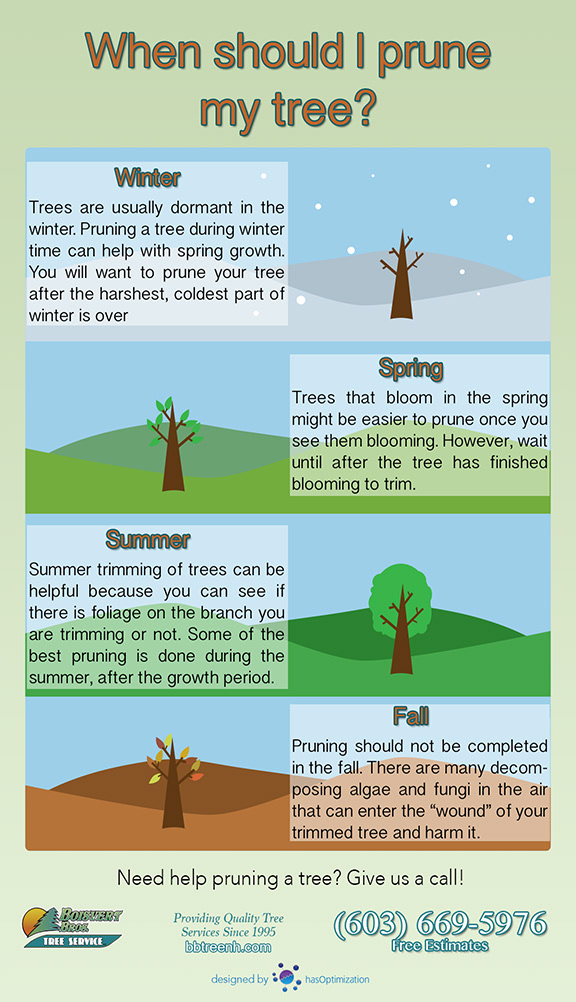Seasonal Tree Upkeep: Guidelines For Managing Trees Before And After They Are Eliminated
Seasonal Tree Upkeep: Guidelines For Managing Trees Before And After They Are Eliminated
Blog Article
Created By-
When it concerns seasonal tree care, making sure appropriate monitoring prior to and after removal can dramatically affect the health and wellness and aesthetic appeals of your landscape. By recognizing the necessary actions involved in evaluating tree health and wellness and getting ready for removal, you can proactively guard your building. Yet what concerning the important practices to adhere to as soon as the tree is gone? Keep tuned to find the essential post-removal care measures that will aid you grow a flourishing and sustainable atmosphere for your trees.
Pre-Removal Tree Care
Prior to attending to the removal of a tree, it's critical to prioritize pre-removal tree care. Begin by evaluating the tree's health and wellness and architectural honesty. Look for signs of disease, parasite invasions, or any kind of structural problems that may position a safety and security hazard during removal. It's vital to seek advice from a licensed arborist to identify the best course of action.
Trimming dead or infected branches can avoid further damages to the tree and ensure a smoother elimination process.
In visit the next post , consider the ecological influence of removing the tree. Trees play a crucial function in our ecosystem, so growing a new tree in a suitable area can help counter any type of loss. Ensure that you have the required licenses and consents for tree elimination, particularly if the tree is protected by neighborhood policies.
Seasonal Upkeep Tips
Examining your tree's requirements throughout the year is necessary for its health and wellness and durability. To keep your trees in leading problem, comply with these seasonal upkeep suggestions.
In spring, focus on pruning to eliminate dead or broken branches and motivate new growth.
Summer season requires regular watering, particularly during dry spells, to guarantee your tree stays hydrated.
As autumn strategies, keep an eye out for very early indicators of condition or tension, and consider using compost to secure the origins throughout winter months.
In arborist education , beware when getting rid of snow from branches to avoid breakage, and continue to check your tree's total health and wellness.
Remember to readjust your treatment regular based on the particular requirements of your tree species and neighborhood environment. By remaining mindful and positive throughout the seasons, you can assist your trees grow and flourish for several years ahead.
Post-Removal Tree Treatment
To make sure the health and wellness of your landscape even after tree removal, correct post-removal care is essential. After https://www.dwell.com/article/6-backyard-landscape-designs-that-need-minimal-maintenance-220ece7a is gotten rid of, it's important to fill the continuing to be opening with topsoil and portable it to avoid settling. This will help keep the stability of the ground and stop potential dangers in the future.
Take into consideration planting brand-new greenery in place of the gotten rid of tree to bring back the balance and looks of your landscape. Regularly water the location to advertise the development of new plants and protect against soil disintegration.
Inspect the surrounding trees for any indications of condition or anxiety that might have been triggered by the gotten rid of tree. Watch out for pests that could've been drawn in to the previous tree and take safety nets to protect the remaining plant life.
If necessary, seek advice from a professional arborist to evaluate the influence of the elimination on the bordering trees and figure out any kind of extra care required. By adhering to these post-removal care steps, you can guarantee the continued wellness and beauty of your landscape.
Conclusion
To conclude, aggressive seasonal tree treatment is important for maintaining the health and wellness and equilibrium of your landscape. By evaluating tree wellness, trimming, and seeking advice from an arborist before removal, you can make sure a safe process. After elimination, loading the hole, growing brand-new plants, and regular watering will advertise new development and stop erosion. Keep in mind to check bordering trees for disease and look for further care measures from an arborist to keep your landscape thriving.
